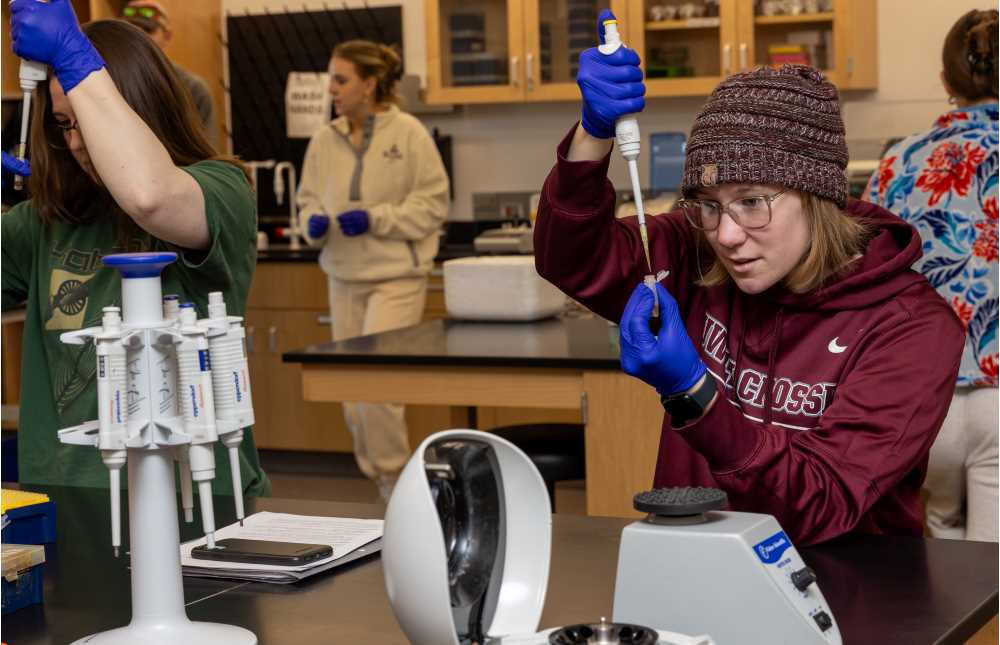Posted 1:19 p.m. Friday, Feb. 21, 2025

Students apply molecular biology to ID plant species for City of La Crosse
Barcodes are commonly seen on products for sale in stores. However, in Adam Schneider’s plant taxonomy course, students are exploring barcoding from a different perspective — DNA and molecular biology.
Schneider, assistant professor of biology at UW-La Crosse, added a DNA barcoding component to his plant taxonomy lab after he noticed DNA sequencing appearing frequently in nearly every area of biology.
DNA barcoding is a technique used to identify plant species by analyzing a short segment of DNA, which is then compared to a reference database of known DNA barcodes. If the sequence matches a known barcode, the plant can be accurately identified.

“I want students to have some minimal exposure to these methods, which have revolutionized our understanding of plant relationships and taxonomy over the last 30 to 40 years,” Schneider says.
Coincidentally, last November, Schneider was contacted by Abby Reichling, a civil engineer doing contract work with the City of La Crosse. Reichling shared that the city is interested in identifying a species of plant and its growth rate after finding the root in a city reservoir.
“From a look at the sample, I was able to determine the root was probably only a single year old, but I was not able to identify the species,” Schneider says. “This is a perfect application for DNA barcoding and would provide an opportunity for students to develop fundamental benchwork skills that are applicable to any area of molecular biology or genetics.”

In addition to benchwork skills, students will also learn how to use publicly available databases used in genetic and bioinformatic analysis.
“Extracting DNA from an unknown plant was my favorite lab [so far] because I felt like all my work of learning about plants was put to use in a real world application," says student Will Thon. "It felt good to understand what I was doing and was able to see results.”
The partnership between the city and Schneider’s class is beneficial to both parties, Schneider explains. The city receives data that will help inform its long-term maintenance planning, and students receive hands-on experience tackling a real-world project.
“I would certainly be interested in continuing similar collaboration or ID services in the future,” Schneider continues. “I think that this can be an important contribution to the public mission of UWL, while providing excellent education and training for students.”
Results from the collaboration are expected later this semester.
Learn more about biology at UWL here.
